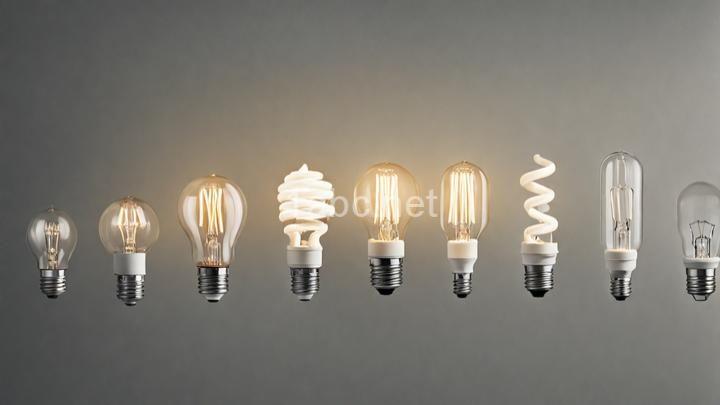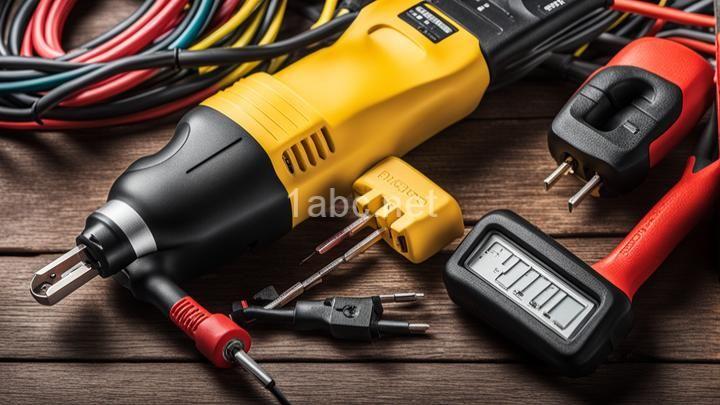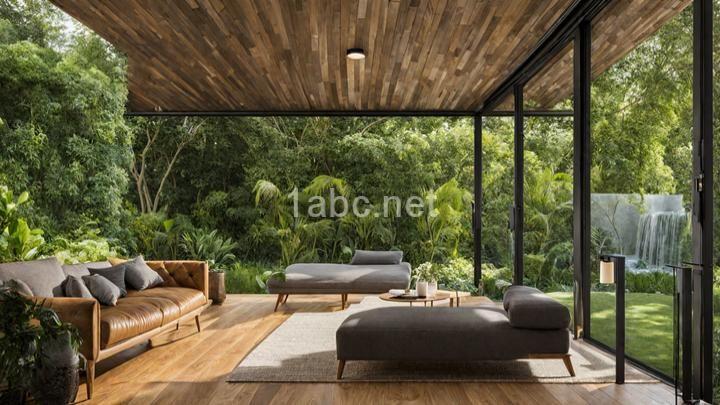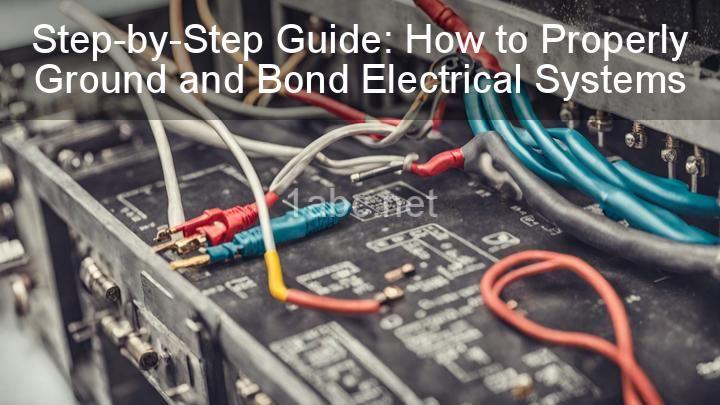A Comprehensive Guide to Choosing the Right Energy-Efficient Light Bulbs

Introduction
Welcome readers to this comprehensive guide on choosing energy-efficient light bulbs. In today's world, where sustainability and cost-effectiveness are becoming increasingly important, it is crucial to make informed decisions about the products we use. This guide will help you understand the importance of energy efficiency and its benefits, as well as provide you with all the information you need to choose the right energy-efficient light bulbs for your needs.
Understanding Energy Efficiency
Energy efficiency refers to the ability of a product or system to perform its desired function while using the least amount of energy possible. When it comes to light bulbs, energy efficiency is all about reducing electricity consumption and lowering utility bills. By choosing energy-efficient bulbs, you not only save money but also contribute to the protection of the environment by reducing greenhouse gas emissions.
Types of Energy-Efficient Light Bulbs
There are several types of energy-efficient light bulbs available in the market today. Let's take a closer look at each of them:
A. LED (Light Emitting Diode) Bulbs
LED bulbs are one of the most popular choices when it comes to energy efficiency. They have a long lifespan, typically lasting up to 25,000 hours or more, which means you won't have to replace them as frequently as traditional incandescent bulbs. LED bulbs also emit very little heat, making them safe to touch and reducing the strain on cooling systems in your home or office. Additionally, LED bulbs come in a wide range of colors, allowing you to create the perfect ambiance for any space.
When selecting LED bulbs, it's important to consider their brightness, measured in lumens, as well as their wattage equivalency. To determine the right brightness level, think about the purpose of the light and the size of the room. For example, a living room may require brighter lighting than a bedroom. Color temperature is another factor to consider, as it affects the mood and atmosphere of a room. Warmer color temperatures, around 2700-3000K, create a cozy and inviting feel, while cooler temperatures, around 5000-6500K, provide a brighter and more energetic ambiance.
B. CFL (Compact Fluorescent Lamp) Bulbs
CFL bulbs are another popular choice for energy efficiency. They are often considered a more affordable alternative to LED bulbs. CFL bulbs have a longer lifespan compared to traditional incandescent bulbs, typically lasting up to 10,000 hours or more. They are also known for their energy-saving capabilities, using up to 75% less energy than incandescent bulbs. However, it's important to note that CFL bulbs may take a few minutes to reach their full brightness, especially in colder temperatures. Additionally, CFL bulbs contain a small amount of mercury and should be properly disposed of to prevent environmental contamination.
When selecting CFL bulbs, consider their compatibility with dimmer switches, as not all CFL bulbs are dimmable. It's also worth noting that CFL bulbs may not be suitable for all types of fixtures, such as recessed lighting or chandeliers. Always check the packaging or consult with a lighting specialist to ensure compatibility.
C. Halogen Incandescent Bulbs
Halogen incandescent bulbs are a more efficient alternative to traditional incandescent bulbs. They use a halogen gas inside the bulb to improve efficiency and lifespan. Halogen incandescent bulbs offer a crisp, white light that is similar to natural daylight. However, it's important to note that these bulbs can get hot and should be handled with care. Halogen incandescent bulbs are often used in task lighting or accent lighting applications, where a high level of brightness and color rendering is desired.
Factors to Consider When Choosing Energy-Efficient Light Bulbs
When choosing energy-efficient light bulbs, there are several factors to consider to ensure you make the right choice for your specific needs:
A. Brightness Level
In the past, we used to rely on wattage to determine the brightness of a light bulb. However, with the introduction of energy-efficient bulbs, wattage is no longer a reliable indicator of brightness. Instead, we now use lumens to measure the brightness of a bulb.
As a general guideline, consider the following lumen ranges for different room sizes:
- Bedroom or small office: 500-1,000 lumens
- Living room or kitchen: 1,000-3,000 lumens
- Large living room or open space: 3,000-6,000 lumens
B. Color Temperature
Color temperature refers to the appearance of light emitted by a bulb, ranging from warm to cool tones. Warm color temperatures, around 2700-3000K, create a cozy and inviting feel, while cool color temperatures, around 5000-6500K, provide a brighter and more energetic ambiance. Consider the purpose of the room and the desired atmosphere when selecting the color temperature of your light bulbs.
C. Compatibility with Fixtures
Not all energy-efficient bulbs are compatible with all types of fixtures. Certain fixtures, such as recessed lighting or chandeliers, may have specific requirements for bulb size or type. Before purchasing bulbs, check the packaging or consult with a lighting specialist to ensure compatibility with your existing fixtures.
D. Cost and Energy Savings
While energy-efficient bulbs may have a higher upfront cost compared to traditional incandescent bulbs, they offer significant long-term savings. Energy-efficient bulbs consume less energy and have a longer lifespan, which means you'll spend less on electricity bills and replacement bulbs over time. To determine the potential energy savings and payback period, consider factors such as the bulb's wattage, usage hours, and electricity rates. Many manufacturers provide calculators or tools on their websites to help you estimate your potential savings.
Additional Tips for Choosing Energy-Efficient Light Bulbs
In addition to the factors mentioned above, here are some additional tips to keep in mind when choosing energy-efficient light bulbs:
- Look for ENERGY STAR certified bulbs: ENERGY STAR certified bulbs meet strict efficiency and quality standards, ensuring you get the best performance and energy savings.
- Read packaging labels: Pay attention to important information on packaging labels, such as lifespan, warranty, and dimmability. This will help you choose the right bulbs for your specific needs.
- Consider your specific lighting needs: Think about the purpose of the light, whether it's for general lighting, task lighting, or accent lighting. Different lighting needs may require different types of bulbs.
Conclusion
Choosing energy-efficient light bulbs is not only beneficial for the environment but also for your wallet. By understanding energy efficiency and considering factors such as brightness level, color temperature, compatibility with fixtures, and cost savings, you can make informed decisions that will have a positive impact on both the planet and your finances. Remember to share this guide with others who might benefit from it, and let's all contribute to a greener and more energy-efficient future.
FREQUENTLY ASKED QUESTIONS
What is the purpose of this guide?
The purpose of this guide is to provide assistance and answer questions on various topics. Whether you need help with a specific task, want to learn something new, or seek guidance on a particular topic, this guide aims to provide the support you need. Feel free to ask any questions you have, and I'll do my best to assist you!
Why should I choose energy-efficient light bulbs?
There are several reasons why you should choose energy-efficient light bulbs:
Lower energy consumption: Energy-efficient light bulbs, such as LED (light-emitting diode) and CFL (compact fluorescent lamp) bulbs, require significantly less energy to produce the same amount of light as traditional incandescent bulbs. This lower energy consumption helps to reduce your electricity bills and conserve energy resources.
Longer lifespan: Energy-efficient light bulbs have a longer lifespan compared to incandescent bulbs. LED bulbs, for example, can last up to 25 times longer. This means fewer replacements and less waste, resulting in cost savings and reduced environmental impact.
Environmental benefits: Energy-efficient light bulbs produce less greenhouse gas emissions, as they require less electricity to operate. By choosing these bulbs, you contribute to reducing carbon dioxide emissions and helping combat climate change.
Cost savings: Although energy-efficient light bulbs may have a higher upfront cost compared to traditional bulbs, they provide long-term cost savings. Due to their lower energy consumption and longer lifespan, you will save money on your electricity bills and replacement costs in the long run.
Variety of options: Energy-efficient light bulbs come in various shapes, sizes, and colors, offering a wide range of options to suit your lighting needs and preferences. Whether you need bright lighting for working areas or warm ambiance for relaxation, there is an energy-efficient bulb available to meet your requirements.
Overall, choosing energy-efficient light bulbs is a smart choice that can save you money, reduce environmental impact, and provide superior lighting performance.
What are the different types of energy-efficient light bulbs?
There are several types of energy-efficient light bulbs available. The most common ones include:
LED (Light Emitting Diode) Bulbs: These bulbs use the least amount of energy and have a long lifespan. They are available in a variety of colors and can be used in various fixtures.
CFL (Compact Fluorescent Lamp) Bulbs: CFL bulbs use less energy than traditional incandescent bulbs and can last up to 10 times longer. They are suitable for general lighting purposes.
Halogen Incandescent Bulbs: These bulbs are more energy-efficient than traditional incandescent bulbs, but not as efficient as LEDs or CFLs. They produce a warm, white light and are often used in recessed lighting fixtures.
Energy-Efficient Incandescent Bulbs: These bulbs are an improved version of traditional incandescent bulbs and use less energy. They are available in different shapes and sizes.
It's important to note that LED bulbs are currently the most energy-efficient option and are gradually replacing other types of bulbs in the market.
How do I determine the right bulb for my needs?
Determining the right bulb for your needs requires considering several factors. Here are some steps to help you make the right choice:
Identify the bulb type: Determine whether you need an incandescent bulb, fluorescent bulb, LED bulb, or another type based on your lighting preferences and requirements.
Consider the bulb brightness: Look for the lumens specification on the bulb packaging. The lumens measure the bulb's brightness, and the higher the lumens, the brighter the bulb will be.
Select the right color temperature: Bulbs are available in different color temperatures, ranging from warm white to cool white. Consider the ambiance you want to create and choose a color temperature accordingly.
Check the bulb wattage: Take note of the wattage equivalent specified on the bulb packaging. This indicates the amount of energy the bulb consumes compared to traditional incandescent bulbs. Choose a wattage that matches your desired brightness while also considering energy efficiency.
Determine the bulb shape and size: Consider the bulb's shape and size to ensure it fits properly in your desired fixture or lamp. Common shapes include A19, BR30, PAR20, and more.
Consider the bulb lifespan: Look for the bulb's estimated lifespan, usually indicated in hours on the packaging. Longer-lasting bulbs can save you money in the long run.
Check for additional features: Some bulbs offer additional features like dimming capabilities or smart home compatibility. Consider these features if they align with your needs and preferences.
Remember to always read the packaging and consult with the store staff or manufacturer for any specific questions or concerns about compatibility or usage.



